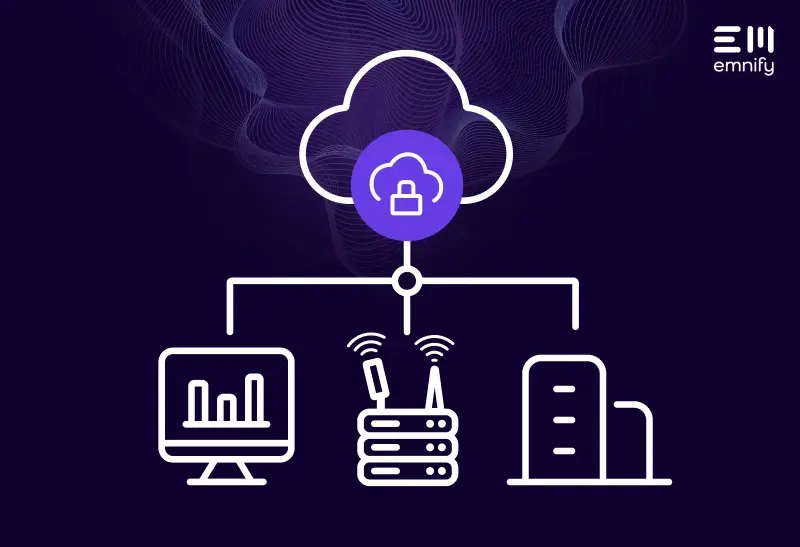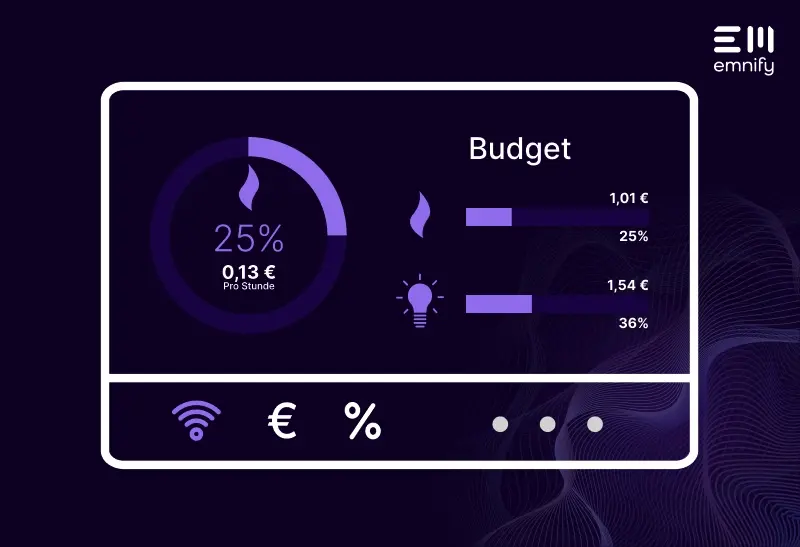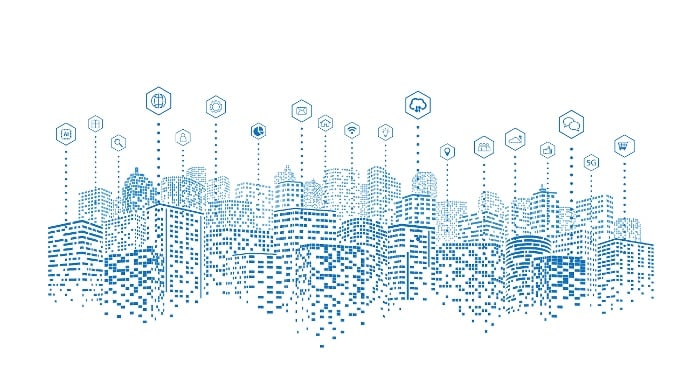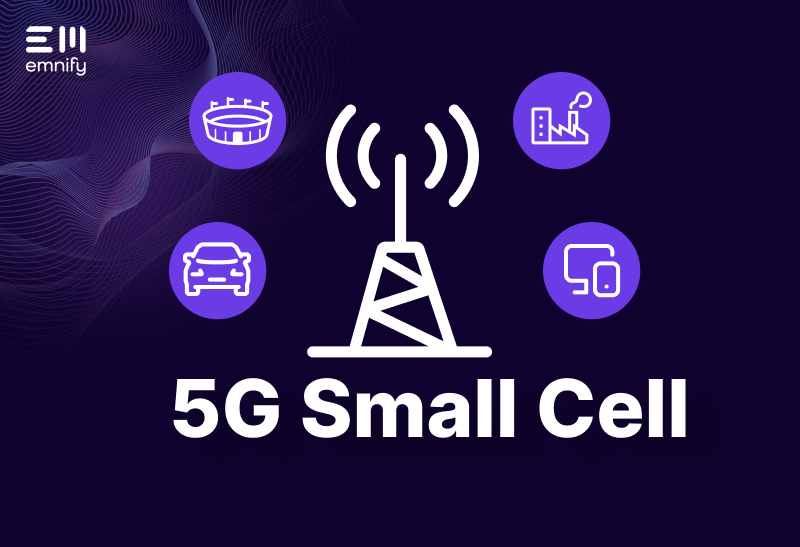

Smart meters are Internet of Things (IoT) devices that measure and transmit data about electricity, water, and gas consumption. Using connected sensors, they share information directly from utility meters, so providers don’t need to manually check installations to charge customers and manage infrastructure.
Through smart submetering, building owners and utility providers can monitor the resource consumption of specific units, facilities, or pieces of equipment. Increasingly, smart meters are also being used to measure energy production from solar panels and other equipment.
Some smart meter gateways can even connect to building automation systems, enabling customers to control heating, cooling, and other utilities based on resource consumption.
This technology is a crucial component of energy conservation efforts, helping customers use resources more efficiently and giving utility providers the insights they need to optimize infrastructure. And it all depends on IoT communication.
For manufacturers, there are several things to consider about smart meter communication. This article explores the various connectivity solutions for smart meters, the protocols they rely on for data transport, regulations surrounding smart meters, and how to prevent smart meter communication from being intercepted.
How do smart meters communicate?
Like all IoT devices, smart meters require a connection to a network. But there are some misconceptions about how that connectivity works for smart meters and what types of solutions are best suited for transmitting data to and from these devices.
For example, smart meters don’t always transmit directly to the cloud. They typically transmit data to a local smart meter gateway, which aggregates data from all meters in an area and then forwards it to the cloud, where providers and customers can access it through a platform.

Smart meters and smart meter gateways have different connectivity needs and often require different solutions that vary on the data link, network, and transport layers of the network architecture.
Note: Both components are often indoors and sometimes underground, so they need communication solutions that can penetrate buildings and obstructions.
We’ve broken down the specific connectivity solutions into three main categories of network protocols:
- Smart meter to gateway communication
- Gateway to cloud communication
- Smart meter to cloud communication
Smart meter to gateway communication
By relying on a gateway to transmit data to the cloud, smart meters can use lighter communication technologies that don’t rely on Transmission Control Protocol/Internet Protocol (TCP/IP). These simpler solutions use less power, enabling the smart meters to operate on batteries. Since they’re less complex, they also cost less.

Wired protocols
In some cases—particularly in new buildings—smart meters use hardwired connections to communicate with a gateway. Deploying the cable or wiring can be a significant upfront investment, and it requires a thorough understanding of the building’s layout. It’s a lot more difficult to add new meters and devices later on with hardwired connections, but it can work in some scenarios.
Ethernet
Using ethernet connections, smart meters can use TCP/IP or User Datagram Protocol/IP to send data to the gateway. In new buildings, ethernet connections are already considered in construction, and smart meters can simply use these connections.
With ethernet, providers don’t have to worry about data limitations, so devices can transmit more often and add new capabilities in the future. And while someone would need physical access to the network to tamper with your device, the ethernet connection is not encrypted, so it’s important to consider ways unauthorized personnel could potentially access it.
Power Line Communication (PLC)
Power Line Communication is one of the simplest options for smart meter communication, but it’s also a little unorthodox. Power lines weren’t built for data transmissions; they were built to provide electricity. So when a smart meter communicates through a power line, these data signals often encounter interference from the electrical current running to powered devices. PLC doesn’t require utility providers to install additional network infrastructure, but it’s less reliable than other solutions.
As with ethernet, PLC enables the meters to transmit to the gateway through TCP/IP.
Meter Bus (M-Bus)
M-Bus is a European standard that’s already widely used in buildings and was specifically developed for smart meters. It includes physical, data, network, and application layers, but no transport, session, or presentation layers. With M-Bus, smart meters need a gateway to convert the data to TCP/IP for transport to the cloud.
Wireless protocols
There’s a range of wireless solutions available for smart meter communication. Since most meters are battery-powered, it’s important for these to be lightweight solutions that conserve power. Most wireless solutions are Low Power Wide Area Networks (LPWANs), which use low frequencies so that signals travel farther and use less power.
Wireless Meter-Bus
Wireless M-Bus is simply a wireless version of the M-Bus standard. It’s already widely available in Europe, but there was initially no official certification program, so smart meter manufacturers who served several countries could encounter challenges with interoperability. To resolve this issue and increase compatibility, the Open Metering System Group standardized the protocol, and now manufacturers need to be OMS certified.
Wireless M-Bus operates on three different frequencies, depending on the mode a meter or gateway uses. All three frequencies are sub-GHz, enabling signals to travel further and penetrate walls and buildings more effectively. As with M-Bus, smart meters that use wireless M-Bus need a gateway to convert the data to TCP/IP.
LoRaWAN
LoRaWAN is a popular LPWAN solution with widely available networks in 25 countries. Providers can connect to one of these networks or deploy their own. However, each LoRaWAN provider only covers a specific region, and there are no roaming agreements between Mobile Network Operators (MNOs). This means that when you choose a service provider and deploy in a region they don’t serve, you have to either select an additional LoRaWAN service provider and manage multiple contracts or deploy your own gateway to connect to your current MNOs network.
In smart meter-to-gateway communication, LoRaWAN is best suited for a clean slate deployment, where there is no infrastructure in place already.
MIOTY
MIOTY is a new LPWAN developed for large-scale industrial IoT applications. MIOTY uses telegram splitting to divide data into subpackets, then transmits the packets at different times and frequencies, which helps reduce interference. MIOTY requires minimal infrastructure to deploy, but it’s still very new, so there aren’t many supported devices yet.
Zigbee
Zigbee uses a mesh network topology to connect devices and extend coverage. The range between individual devices is rather short, but as long as every device is within range of others, it can work well. However, Zigbee also uses the unlicensed 2.4GHz frequency band, which doesn’t penetrate walls and buildings very well and is extremely crowded—especially in urban environments, office buildings, and apartment complexes. This makes these networks prone to interference.
WiFi
WiFi is ubiquitous. And while it can be used for smart meter communications, it’s not well-suited for it. WiFi has the same problem as Zigbee networks: WiFi networks all use the unlicensed 2.4GHz band. Additionally, WiFi has several other problems.
Since it requires your device to integrate with a customer’s infrastructure, it opens the door to security risks. Other devices on the network could be used to access your meter or gateway, and vice versa. WiFi networks are also very short range, and can’t use a “mesh” of devices like Zigbee to increase their coverage.
Additionally, staying connected to a WiFi network consumes significantly more power than other network types. Smart meters can use TCP/IP or UDP/IP to transmit to gateways via WiFi.
Gateway to cloud communication
Smart meter gateways have to receive data from many meters and then transmit it to the cloud. Usually, this requires TCP/IP and greater data throughput. Gateways typically connect directly to a power outlet, making power-saving capabilities less critical.

In this use case, there are two main solutions.
Ethernet/DSL (wired)
With proper planning and consideration of a building’s layout, smart meter gateways can connect to the cloud via ethernet or a Digital Subscriber Line (DSL). DSL uses the building’s telephone lines, so it’s less relevant to new construction where DSL is unavailable. As with smart meters, manufacturers and providers need to consider who can physically connect to the local area network (LAN) and how ethernet could leave customer data and infrastructure vulnerable.
Using ethernet/DSL also raises questions about who pays for this infrastructure and who is liable if, for example, a wire gets cut and metering data isn’t available.
With ethernet and DSL, gateways use either TCP/IP or UDP/IP to transmit to the cloud.
WiFi
WiFi is technically an option, but it has significant drawbacks. As with other problematic solutions, it requires the smart meters to rely on a customer’s infrastructure, creating liability issues. Since the customer’s other devices use the same WiFi connection and WiFi has short range and poor penetration, this option is highly prone to interference. And when the data isn’t available, who is at fault?
Cellular (wireless)
Smart meter gateways are an ideal use case for cellular IoT. The infrastructure is already available globally—your gateways just need a SIM card to connect to it. Cellular signals also have high Maximum Coupling Loss (MCL), which means they provide excellent indoor coverage and can penetrate dense building materials better than other signals.
Within “cellular” networks, there are obviously many different types: 2G, 3G, 4G, 5G, LTE-M, and NB-IoT. As LPWANs designed for IoT, LTE-M and NB-IoT have been alluring to smart meter manufacturers. But gateways can plug into power outlets, so they don’t need these low-power solutions, and manufacturers can focus more on which networks cover the areas they intend to deploy.
Cellular IoT solutions enable your gateways to use TCP/IP or UDP/IP.
Smart meter to cloud communication
In some scenarios, it makes more sense to simply choose a solution that lets your smart meters communicate directly with the cloud. For example, if a building only has a single smart meter, and it’s the only meter a gateway would receive transmissions from, deploying a gateway may feel like overkill.

Sigfox
In areas where Sigfox is available, it can be used for some installations. However, the challenge with Sigfox is that it has a fixed and extremely limited payload size. Your meters can only transmit 12 bytes at a time.
With Sigfox, the meters themselves don’t transport data using TCP/IP, but the transmission gets translated to this protocol at a base station which serves the area your meter is deployed.
Cellular
Cellular networks—particularly LTE-M and NB-IoT—are well suited for smart meter to cloud communication. With power-saving features like Power Saving Mode (PSM) and Discontinuous Reception (DRX), smart meters that transmit periodically can last for years.
LTE-M has enough data throughput that manufacturers can also issue firmware updates Over-the-Air (OTA) to add new features and security, helping to future-proof your devices.
Smart meters that use cellular technology on the network layer use TCP/IP with MQTT or UDP/IP with CoAP to transport data to the cloud.
What data protocols do smart meters use?
Smart meters don’t all use the same protocols to communicate, and the standards often vary by region. There are several protocols smart meter manufacturers should be familiar with, including:
- DLMS/COSEM
- ANSI C12.18
- Open Smart Grid Protocol (OSGP)
- TCP/IP
- UDP/IP
- MQTT
- CoAP
- HTTP
- Websockets
- XMPP
DLMS /COSEM
DLMS stands for Device Language Message Specification, and COSEM stands for Companion Specification for Energy Metering. They’re both part of IEC 62056, a suite of international standards for smart meters. COSEM uses object modeling to represent smart meter data and give it attributes, and DLMS specifies the syntax. Together, DLMS/COSEM specify different protocol stacks depending on the type of network being used to transport data.
ANSI C12.18
The American National Standards Institute’s ANSI C12.18 was specifically designed for two-way communications with a smart utility meter. Primarily used in North American countries, this standard uses an ANSI Type 2 Optical Port and defines data transfer between the meter and a client such as a computer, handheld device, or master station system.
OSGP
Open Smart Grid Protocol is one of the most dominant groups of standards for sending commands to smart meters. Published by the European Telecommunications Standards (ETSI), OSGP uses Open Systems Interconnection (OSI) model and builds upon a range of open standards, including ANSI C12.18 and IEC 62056.
TCP/IP
Transmission Control Protocol/Internet Protocol is the most popular protocol for sending data over the Internet, becoming a more popular communication solution for smart meters, as it leaves room for manufacturers to use multiple communication systems and change modules and standards as needed.
UDP/IP
User Datagram Protocol/Internet Protocol is an alternative to TCP/IP which prioritizes speed over accuracy (whereas TCP/IP prioritizes accuracy over speed). It reduces latency, but if packets arrive out of order, go missing, or get duplicated, UDP won’t correct these transmission errors. In the future, as the industry gets closer to real-time transmission, UDP may become more widely used in smart meters.
MQTT
Message Queuing Telemetry Transport is a lightweight protocol frequently paired with TCP/IP. It’s widely used in IoT applications because it requires very little bandwidth or network resources to transport data between network entities. MQTT uses a publish/subscribe model, wherein smart meters or gateways “publish” messages, and an MQTT broker distributes them to any network entities that have “subscribed” to the message type.
CoAP
Constrained Application Protocol (CoAP) is designed for low-power, lossy networks, also known as “constrained” networks. This service-layer protocol is paired with UDP and is highly efficient, making it appealing for IoT applications where battery conservation is important (like smart meter to gateway communication).
HTTP
Hypertext Transfer Protocol is the most widely used protocol for navigating the Internet. While it has plenty of use cases for IoT, it’s a resource-heavy application protocol designed for one-to-one communication, which makes it unideal for smart meter to gateway communication. Like MQTT, HTTP relies on TCP/IP for data transport.
Websockets
Websockets is a communication protocol that allows for simultaneous, bidirectional, real-time communication between a client and a server. While its ability to stream messages in real-time could be valuable for smart meters down the road, it uses too much power for battery-powered devices that need to last for years.
XMPP
Extensible Messaging and Presence Protocol is a communications protocol built on Extensible Markup Language (XML). This open-source technology is highly accessible and still being enhanced with new IoT-related developments.
What are the regulations for smart meters?
Most of the regulations manufacturers and utility providers will encounter in the coming years will have to do with IoT security, transmission frequency, and capabilities.
Smart meters represent a huge opportunity for large-scale energy savings. The more frequently they transmit, the more useful they are for optimization—for manufacturers and consumers alike. And the more widely deployed they are, the more control utility providers have over their energy infrastructure.
While smart meters didn’t require much data in the past, the trend is toward making data about resource consumption available in as close to real time as possible, from as many meters as possible. Regulating bodies are pushing the industry to develop solutions that transmit more frequently from more places, and manufacturers will need communication solutions that can scale with the industry.
In the EU, the European Energy Directive (EED) aims to increase energy efficiency 32.5% by 2030, and smart meters play an integral role in that directive. Devices deployed in the EU will be expected to transmit heat and water consumption data in real-time so that end customers can better manage their usage and eliminate wasteful consumption.
Smart meters also pose a significant security risk to customers and even countries as a whole. Hacking smart meters could cripple key infrastructure of large organizations or entire regions. So keeping smart meter communication secure and ensuring the privacy of customer data is critical.
Many connectivity solutions don’t have the data throughput for remote firmware updates, and the devices themselves are built to last for years. This makes them increasingly vulnerable to cyber attacks over time. As such, the devices, gateways, and the organizations that operate them typically need security certifications.
Manufacturers that want to build future-proof solutions should look to connectivity options that offer network security features, can support firmware updates, and have the data throughput to increase transmission frequency to keep up with regulations.
Learn more about smart metering solutions
emnify is a communication platform specifically designed for the Internet of Things. Our cloud native solution allows your devices to securely connect to more than 540 cellular networks in over 180 countries. As smart meter regulations evolve, your devices will have the communication capabilities to evolve with them.
Get in touch with our IoT experts
Discover how emnify can help you grow your business and talk to one of our IoT consultants today!
David Garcia brings his passion and over 8 years experience in IoT/IIoT to Product Marketing, along with Extensive experience in Utilities, Energy, Transportation, Manufacturing vertical markets.


